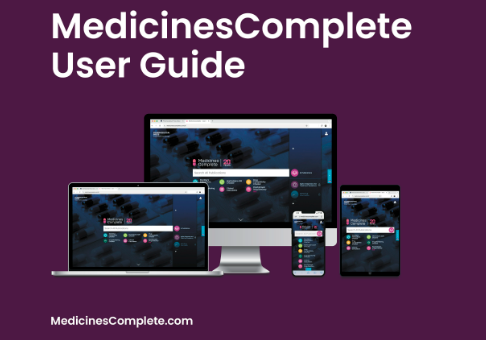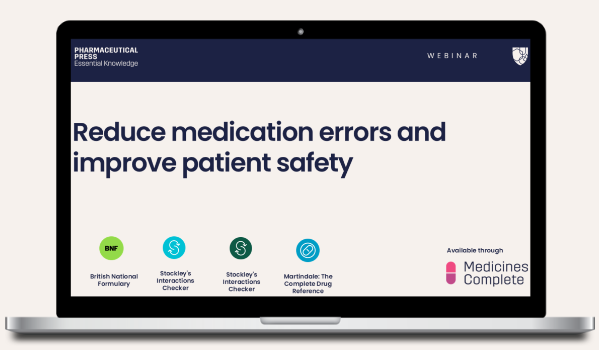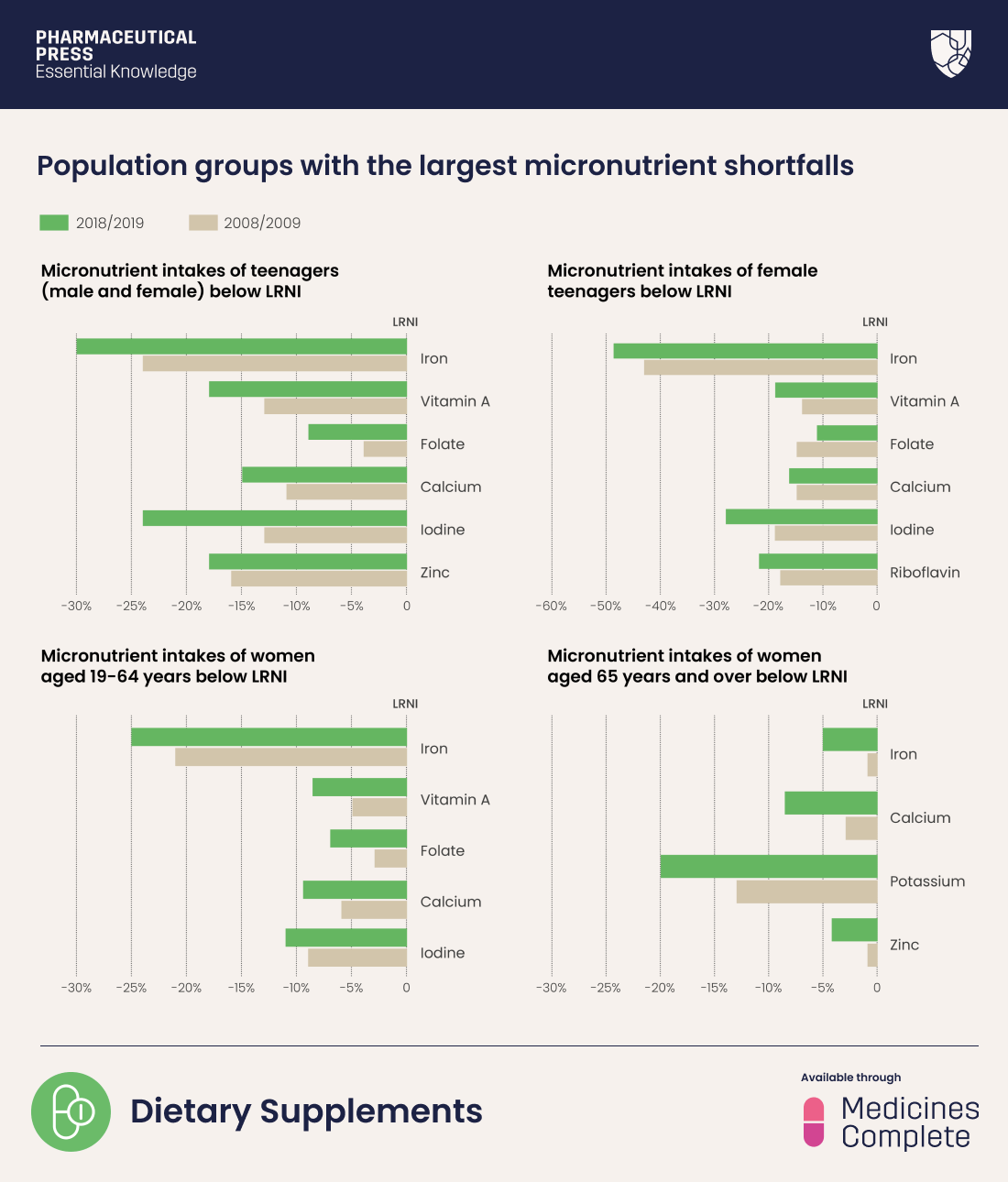Dietary supplements: how to help patients optimise their micronutrient intake- Macronutrients and micronutrients
- Declining intakes and reference nutrient intake (RNI)
- The importance of micronutrients
- Dietary Supplements, available through MedicinesComplete
Vitamin and mineral deficiencies are not a thing of the past. Some people, particularly teenagers, women, and over 65s, are not getting the micronutrients they need to protect and maintain their health.
It is incumbent on health professionals to highlight the risks of this and to help patients optimise their intakes.
Dr Pamela Mason, editor of Dietary Supplements, outlines the crucial role of micronutrients and summarises the evidence for inadequate intakes. She also explains how health professionals may use MedicinesComplete to provide trusted, individualised advice.
Please complete the form at the bottom of this article to request a complimentary trial of MedicinesComplete.
Macronutrients and micronutrients
The role of micronutrients
Nutrition plays a vital role in supporting the immune system and a healthy diet is the cornerstone of good health. It should consist of the correct balance of macronutrients and micronutrients needed to support each person’s energy needs.
In recent years, the UK’s dietary guidance has primarily focused on:
- fats
- carbohydrate
- sugar
- energy
- calories.
This is due to concerns about the links between diet, obesity, and health conditions such as cardiovascular disease and Type 2 diabetes.
The importance of vitamins and minerals, however, has taken something of a back seat, partly because deficiency diseases were considered to have largely disappeared.
Yet data show that inadequate intake and status of many of these nutrients is widespread. This is important because mechanistic and clinical data show that vitamins and minerals play crucial and complementary roles in supporting the immune system. Deficiencies compromise immune function, increasing susceptibility to infections. What’s more, poorer outcomes have been observed in cases of marginal and low micronutrient intakes.¹
Declining intakes and reference nutrient intake (RNI)
Dietary advice is based on dietary reference values, which are estimates of the energy and nutritional requirements of different groups of healthy people. A reference nutrient intake is the amount of a nutrient that would be sufficient to ensure the needs of 97.5% of a group are being met.
A lower reference nutrient intake (LRNI) is the amount sufficient for only a small number of people in a group, 2.5%, who have low requirements. The vast majority of people, then, would need more than the LRNI of any given micronutrient.²
The UK’s two major dietary surveys, the Department for Environment Food and Rural Affairs Annual Family Food Survey and the UK National Diet and Nutrition Survey Rolling Programme (NDNS-RP), show that mean micronutrient intakes are close to RNI. However, intakes of several vitamins and minerals fall below the LRNI in certain sub-populations.³ ⁴ ⁵
In addition, NDNS-RP time trend data demonstrate that in some age groups, riboflavin, folate, vitamin A, vitamin D, iron, calcium, iodine, and potassium intakes have declined over the last two decades (see fig 1).⁵
Declines by age group
In 2018/19, almost one third (30%) of teenagers failed to achieve the LRNI for iron, representing a 6% increase from 2008/9. Just under a fifth (18%) failed to achieve the LRNI for vitamin A, compared with 13% in 2008/9. Such shortfalls and declines are more pronounced in teenage girls.
In 2008/9, 43% failed to achieve the LRNI for iron, a figure that had risen to 48% in 2018/19. The proportion of 11 to 18 year old girls not achieving the LRNI of folate almost doubled over the survey period, from 6% to 10%.⁵
Women aged 19 to 64 years have also shown a downturn in micronutrient intake. The proportion not achieving the LRNI for folate has more than doubled, from 3% to 7%, between 2008/9 and 2018/19.
Likewise, the proportion not meeting the LRNI has grown from 5% to 8% for vitamin A, 21% to 25% for iron, and 9% to 12% for iodine. These figures are concerning in the context of pregnancy and maternal health in women of childbearing age.
Similar trends have been identified in women aged over 65 years over the same time period. The proportion not achieving the LRNI for iron has increased from 1% to 5%, with the proportion failing to achieve the LRNI for calcium more than doubling, from 3% to 7%. For potassium, the figure has grown from 13% to 20%. In 2008/09, just 1% of older women failed to achieve the LRNI for zinc, but this had increased to 4% in 2008/9.⁵
The importance of micronutrients
With all this is mind, health professionals are encouraged to highlight the importance of micronutrients within a healthy diet.
General recommendations include a diet high in fruit and vegetables, beans and pulses, and whole grains, as well as dairy or dairy alternatives. People can aim for two portions of fish, including one oily, a week, and try to restrict red meat to 70g or less a day.⁶
We all know that significant numbers of people, however, do not consume a healthy diet. A daily multivitamin/multimineral supplement is a safe, low-cost strategy for bridging the dietary gap.
Health professionals can advise people to take a micronutrient supplement either one hour before eating and drinking, or two hours after.
In many cases, the decision whether to recommend micronutrient supplementation will depend on the patient.
Others who may benefit from vitamin or mineral supplements include:
- people whose nutritional status may be compromised by their lifestyle, such as smokers, alcoholics, drug addicts, and vegans
- people whose nutritional status may be compromised by disease, such as malabsorption syndromes, hepatobiliary disorders, severe burns and wounds, or inborn errors of metabolism
- people whose nutritional status may be compromised by long-term drug administration.
Trusted, evidence-based information
Dietary Supplements, available through MedicinesComplete, can help health professionals providing accurate, up-to-date advice. It is a comprehensive, evidence-based guide to the most commonly used vitamins, minerals, and dietary supplements.
Health professionals may navigate through this information to research topics such as human requirements, dietary sources, and deficiency. It also covers the potential adverse events and precautions/contraindications of supplementation, as well as doses, and upper safety levels.
Trial form
Please complete the form below to request a complimentary trial to knowledge products through MedicinesComplete.
References
- 1. Calder, P. C., Carr, A. C., et al. (2020). Optimal nutritional status for a well-functioning immune system is an important factor to protect against viral infections. Nutrients, 12(4), 1181.
- 2. British Nutrition Foundation. (2021). Nutrition Requirements. Available at: https://www.nutrition.org.uk/media/nmmewdug/nutrition-requirements.pdf Last accessed: 27th January 2025
- 3. DEFRA. (2002 – 2011) The National Archives: Family food Annual Reports (2002 – 2011). Available at: https://webarchive. nationalarchives.gov.uk/20130103031008/http://www.defra.gov.uk/statistics/foodfarm/food/familyfood/ Last accessed: 27th January 2025
- 4. DEFRA. (2020). Family Food 2018/19. Available at: https://www.gov.uk/government/statistics/family-food-201819/family-food-201819 Last accessed: 27th January 2025
- 5. NatCen Social Research (2020). National Diet and Nutrition Survey: Years 9 to 11 (combined) of the Rolling Programme (2016/2017 – 2018/2019). A survey carried out on behalf of Public Health England and the Food Standards Agency. Available at: https://assets.publishing.service.gov.uk/media/5fd23324e90e07662b09d91a/NDNS_UK_Y9-11_report.pdf Last accessed: 27th January 2025
- 6. Food Standards Agency. (2020). The Eatwell Guide Helping you eat a healthy, balanced diet. Available at: https://www.food.gov.uk/sites/default/files/media/document/eatwell-guide-master-digital.pdf Last accessed: 27th January 2025













